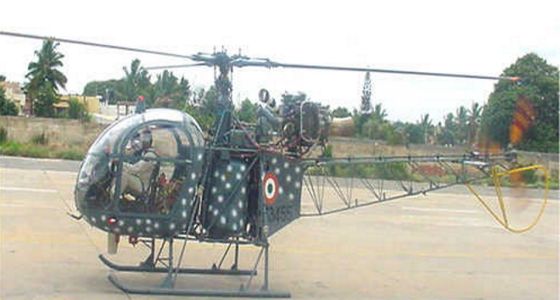Expedite replacement of ageing helicopteR

The death of Lt Col VVB Reddy and his co-pilot Major Jayanth A in a Cheetah crash in West Kameng district of Arunachal Pradesh adds another tragic chapter to the annals of this ageing helicopter. Poor visibility due to bad weather conditions is being cited, prima facie, as the cause of the accident, even as a Court of Inquiry has been ordered. In October last year, the border state had witnessed a Cheetah mishap that claimed the life of the pilot, Lt Col Saurabh Yadav. Unfortunately, such casualties are forgotten in a hurry and accountability is not ensured, even as what has remained vividly in public memory is the 2021 crash of a Mi-17V5 helicopter that killed the then Chief of Defence Staff Gen Bipin Rawat — who had survived a Cheetah accident in 2015.
About 10 Chetak and Cheetah helicopters of the Army, Navy and the IAF have crashed between 2017 and 2022. Regarded as the lifeline of the forces in high-altitude areas, their phaseout or replacement has been beset by a slew of challenges. The Union Government has been showcasing the Cheetah as one of India’s key indigenous defence projects, but the ground reality is that issues pertaining to its serviceability, avionics and navigation system have not been adequately addressed. These lapses have made this helicopter vulnerable to accidents in rough and unpredictable weather. The slow pace of work on the Light Utility Helicopter (LUH), being manufactured by Hindustan Aeronautics Limited, has also prompted the deployment of Chetaks and Cheetahs well beyond their shelf life.
A year ago, the government had told Parliament that 42 personnel of the armed forces lost their lives in 45 aircraft and helicopter crashes over a five-year period. These are irreparable losses not only for the tri-services and the families of the deceased but also for the entire nation. The recurring tragedies indicate that aircraft airworthiness and safety are not top priorities. The all-important task of replacing the past-their-prime relics with LUHs should be fast-tracked without fail. The use of advanced warning systems is also a must to reduce the possibility of a crash in inclement weather, particularly in mountainous regions.
